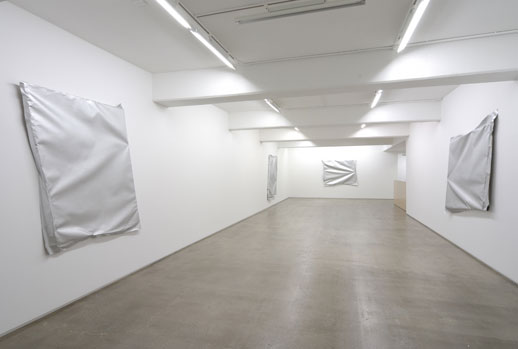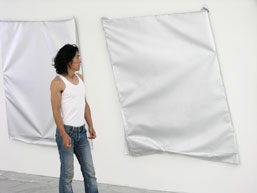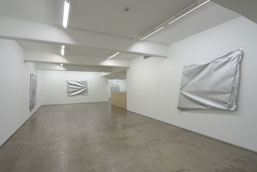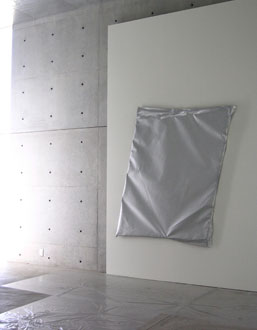Shedding New Light on Painting

Masato Kobayashi’s “Light Painting” shows that a canvas can be more than just, well, a canvas. As the word has come to be synonymous with something that is utterly neutral until someone or something adds to it, the simple idea that the canvas itself can be a medium as relevant to a work as the painted surface itself comes as a pleasant surprise.
Kobayashi’s canvases are capable of considerable depth, such that his work is often described as falling somewhere to the left of painting, moving towards sculpture. He usually paints with his hands on un-stretched canvases that are later lightly attached to or draped over canvas stretchers.


At his latest exhibition at Shugo Arts, Kobayashi displays a series of canvases, stiff and thick with paint, entirely silver and wrapped in a seemingly haphazard fashion around their stretchers, screwed on here and there. With all the resulting crinkles, the effect is a little like aluminum foil hastily thrown over a plate of unfinished food or a piece of crumpled sheet metal discarded at a construction site.

The bends and folds, however, when illuminated by the florescent bulbs overhead result in topographies of light and shadow, with colors that vary from an almost iridescent white to a deep gun metal gray. The effect is quite literally brilliant, with beams of light shooting across the canvases. It is this element of installation, and the idea that these paintings are at rest when the lights go as the gallery closes for the evening, that makes Kobayashi’s work seem truly alive.
What Kobayashi has managed is actually a painting in reverse: whereas most painters mix colors to affect a look of light and shadow, the artist manipulates his canvases and the source of light to create actual contrasts of highlight and shadow. While the arrangements of the canvases appear random, closer inspection reveals his exacting eye, indicated by the many rejected screw holes along the edges of the canvas. These pieces are an edited body of work, but not a clean, final draft: they leave the artist’s thought processes exposed.
However, one can’t help but wonder from a collector’s point of view to what extent he created these pieces with the particular gallery’s lighting scheme in mind. Considering the endless possibilities of lighting arrangements, these paintings become limitless in their potential, and for better or for worse, the act of display becomes all the more crucial. Here Kobayashi has perhaps discovered that light is the most delicate and precious of media.
Rebecca Milner
Rebecca Milner


